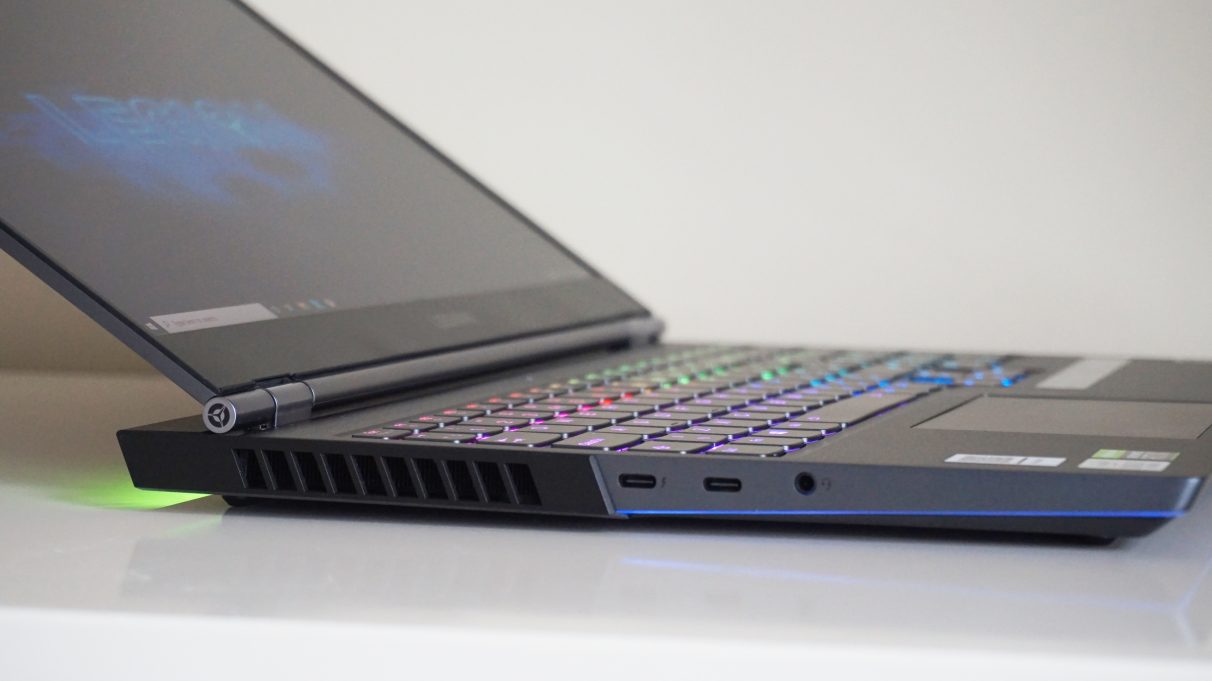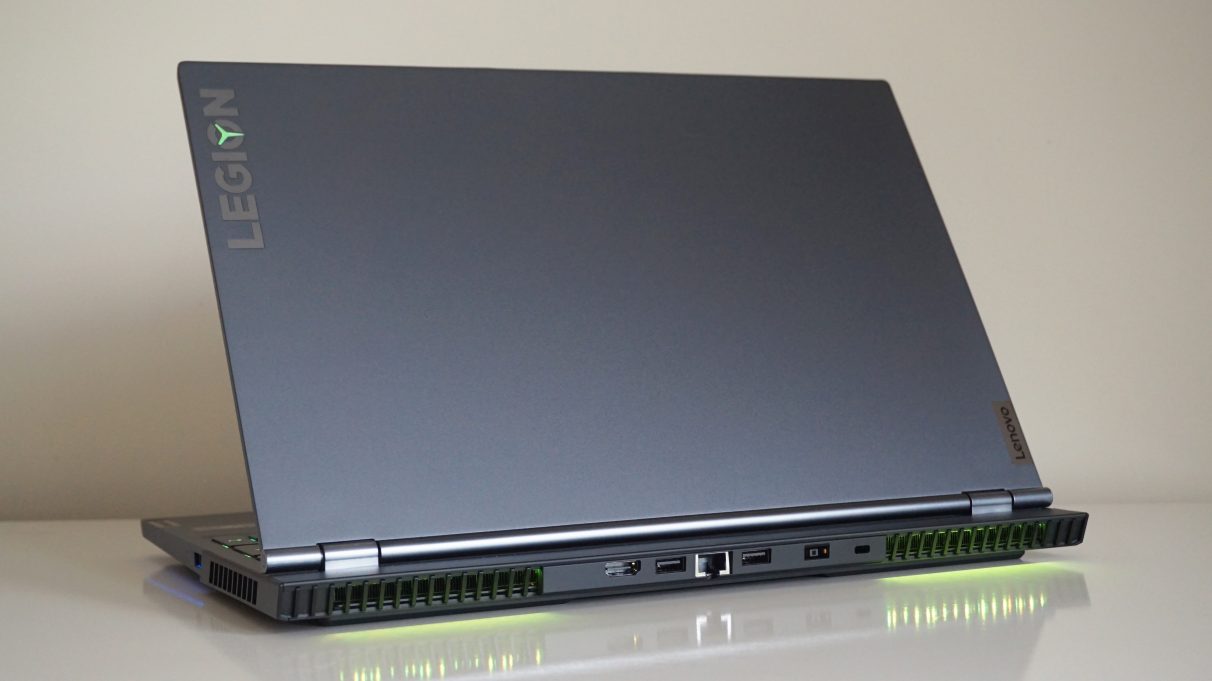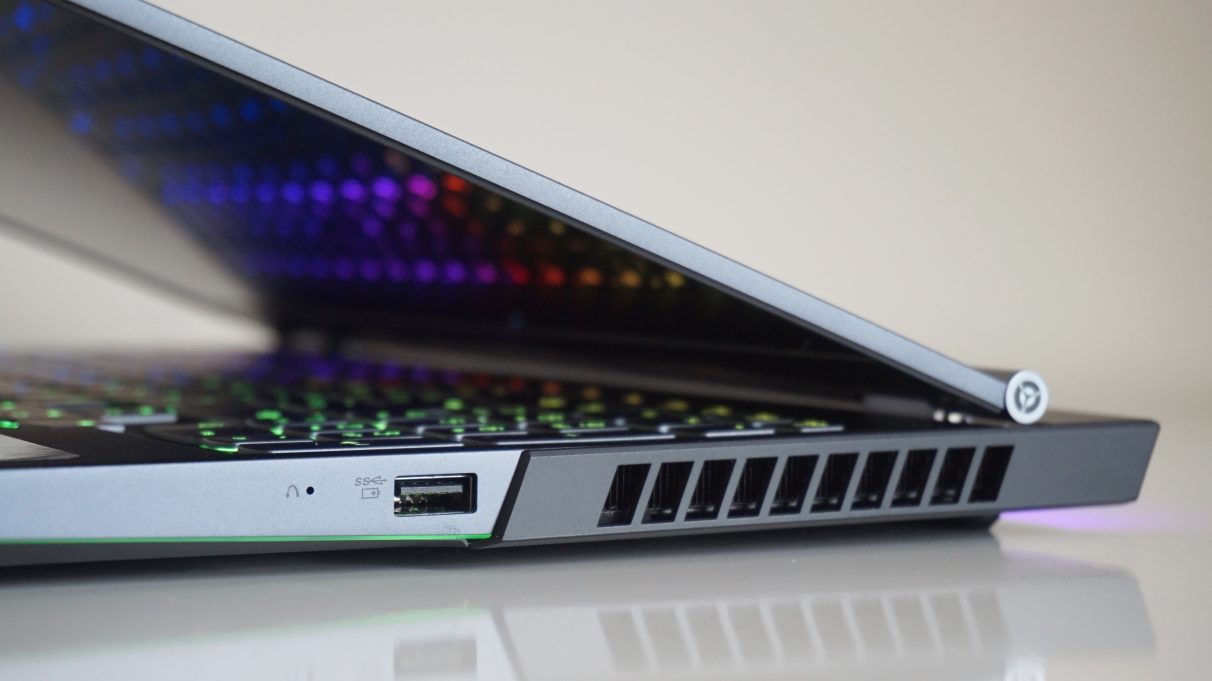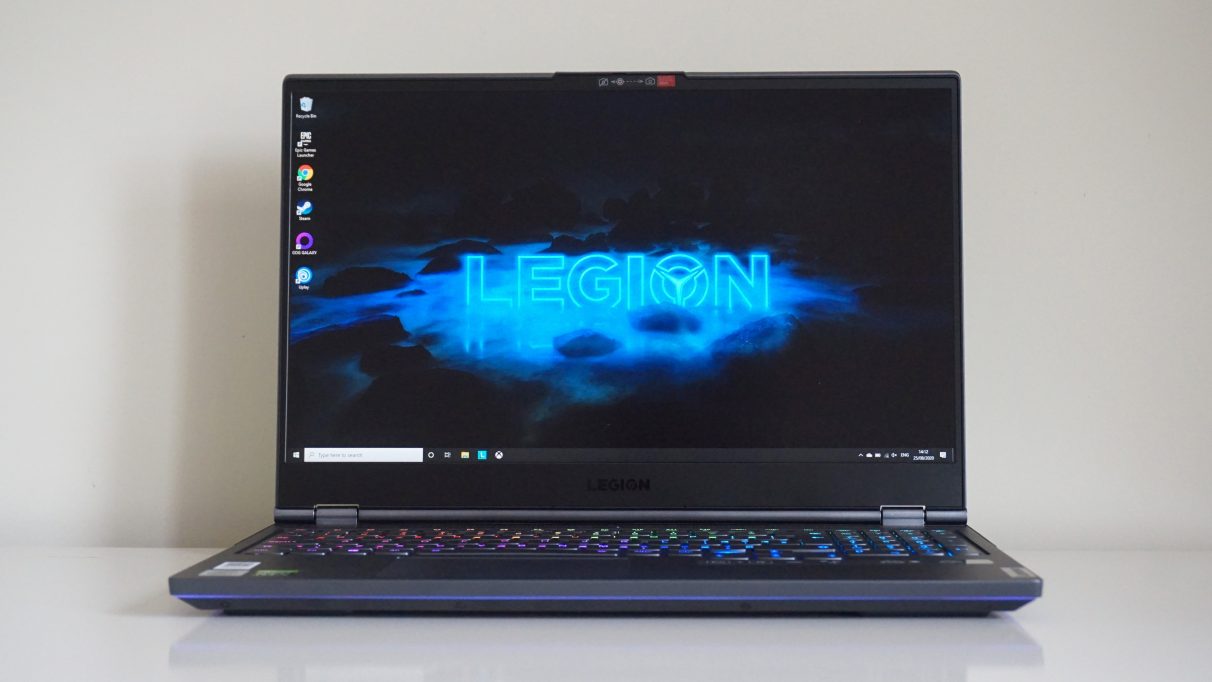I was sent the most powerful (and consequently most expensive) model of the Legion 7 for review, the specs of which I’ve detailed above. In the UK, it’s also available in a cheaper Core i5-10300H / GTX 1660 Ti variant for £1300, and you’ll find Core i7 models with RTX 2060 and RTX 2070 Super Max-Q chips inside them as well for £1500 and £1800 respectively. The US has slightly different CPU and GPU combinations available for similar-ish sorts of prices, and you’ll even find a Core i9, 240Hz model for a cool $3000-odd if you happen to have a spare mattress’ worth of cash knocking around. Still, regardless of what model happens to fall into your particular price range, there’s one thing they all have in common: a gorgeous 15.6in, 1920x1080, IPS display. Simply put, it’s one of best laptop screens I’ve ever seen, covering a full 100% of the sRGB colour gamut, and a very impressive 90.7% of the HDR-grade DCI-P3 gamut, too. Combine that with a good contrast ratio of 1196:1, a low black level of 0.43cd/m2 (the closer to 0.00cd/m2, the better) and a peak brightness of 520cd/m2, and the Lenovo Legion 7i’s display really packs a punch, delivering bright, vivid colours with plenty of fine shadow detail. Every game in my benchmarking suite looked absolutely stunning on the Legion 7i, and the fact you get this display on every model really puts its competition to shame. It’s miles better than my previous favourite gaming laptops, the Acer Triton 500 and Asus ROG Strix Scar II, which covered around 85% of the sRGB gamut, and even gives more expensive laptops such as the ultra fancy Asus ROG Zephyrus Duo 15 a run for their money, too. In short, you’d normally have to pay a lot more to get a display like this, and it’s something that really makes lower-end models stand out from the crowd. Even better, its RGB backlit keyboard didn’t absolutely roast my fingers on the WASD keys when I was playing games. This can sometimes be a big problem on ultra-slim gaming laptops, but happily every key on the Legion 7i managed to keep itself lovely and cool at all times. Best of all, its fans didn’t sound like they were about to launch the laptop into space, either, making it much more pleasant to use for long periods of time. The keyboard tray does have a bit of flex in it, admittedly, and I could see it dip and bend under my fingers if I applied too much force. This isn’t ideal, especially on the more expensive models where I’d normally expect a higher level of build quality. The worst of it is centred around the middle section of the keyboard, so I only really noticed it when I was typing up long word documents. The WASD keys were thankfully a lot sturdier, but it’s still a bit of a shame nonetheless. The Legion 7i was still perfectly comfortable to type on, though, and each key had plenty of travel. I occasionally stumbled over the left Shift and \ key, which are semi-mashed together on the model I reviewed, but it wasn’t long before my fingers adapted and I was back up to full typing speed. The keyboard flex is arguably the Legion 7i’s only major downfall, as I had absolutely no complaints in the gaming department whatsoever. So often I see gaming laptops whose specs are woefully mismatched to the type of display they have, but the Intel Core i7-10875H, 16GB of RAM and RTX 2080 Super Max-Q chip on my Legion 7i review sample felt like the perfect combination when I put them through my benchmark suite. That’s not to say all of today’s big games will be able to hit that full 144Hz refresh rate on max settings, of course, but the Legion 7i certainly puts on a good show regardless. In Forza Horizon 4, for example, it managed an average of 130fps on Ultra settings at 1080p, and it also averaged a very smooth 90fps in The Witcher 3 on Ultra quality as well. Tougher games will see that average frame rate fall back down closer to 70-80fps on max settings, but it’s still considerably better than what I saw on the similarly specced Asus ROG Zephyrus Duo 15 just a couple of weeks ago. In Monster Hunter: World, for example, the Legion 7i produced a smooth average of 74fps on its Highest quality setting, and it also came in with an impressive 68fps average in Total War: Three Kingdoms on Ultra quality, too, which is almost 10fps faster than its Asus rival. It also sailed through Shadow Of The Tomb Raider’s benchmark with an average of 72fps on its Highest quality setting with its tough SMAA x4 anti-aliasing setting enabled, and it even managed a smooth 65fps average with its Ultra ray traced shadows setting switched on when I dropped the AA down to its regular SMAA setting. That’s pretty good going for a gaming laptop, especially when the game’s performance boosting DLSS feature isn’t available at 1080p. The Legion 7i also put in a good showing in Final Fantasy XV, too. On its top Highest setting, it averaged a very agreeable 80fps with all the extra Nvidia settings turned off, and still averaged 60fps when I turned on HairWorks and TurfEffects. This dropped to 52fps when I added in everything, but that’s still eminently more playable than the 45fps I managed on the Duo 15. Some games still push the Legion 7i to its limits. The demanding Assassin’s Creed Odyssey, for example, just about hit an average of 60fps on its Ultra High quality setting, as did Metro Exodus. However, both of these games still look superb on the next quality rung down, and re-running their benchmarks again saw Assassin’s Creed average a much more agreeable 71fps on Very High, with Metro Exodus coming in at 79fps on High. Either way, these are still some of the best results I’ve seen from a gaming laptop with this kind of spec, and at no point did it seem like it was accidentally throttling itself due to overheating or performing worse than expected. The Core i7-10875H has buckets of processing power at its disposal, too. This is the top 10th Gen Core i7 chip you can find in gaming laptops at the moment, and its 8 cores and 16 threads absolutely churned through the Cinebench R20 benchmark. Indeed, its single core score of 484 puts it on a level playing field with the Core i9-10980HK inside the Duo 15, and its multi-core score of 3700 is pretty impressive, too. While it doesn’t quite match the Duo 15’s score of 4143, it’s still quite a bit faster than Intel’s previous generation of Core i7 laptop processor, coming in around 40% faster than the Core i7-9750H. As a result, everything feels blindingly quick on the Legion 7i, from browsing the web to doing a bit of light photo editing. The Legion 7i has a very nippy SSD to go with it, too, which makes everything feel that bit snappier. When I tested it with AS SSD’s 1GB random 4K test, for example (the same test I use for PC SSDs), the 1TB model inside my review sample finished the test with an excellent random read speed of 41MB/s and a random write speed of 101MB/s, putting it pretty much on par with the considerably more expensive Duo 15 again.
In short, I have very few complaints about the Lenovo Legion 7i, and I’m not even that bothered by the keyboard flex I mentioned earlier. Everything about this laptop just feels perfectly matched, which deserves to be celebrated when so many of its rivals tend to fall prey to needless excess. It doesn’t have a pointless 4K display whacked on it just because it has an RTX 2080 Super chip inside it, and its powerful innards don’t instantly overheat and kick up a fuss with the fans as soon as you boot up a game. The RGB lighting might be a tad over the top, admittedly, but the rest of its design feels sleek and modern and pleasingly low-key. Yes, this particular model is pretty darn expensive at £2200 / $2240, but the fact you still get that gorgeous display further down the range is a big plus point in my books, and if the same chassis can keep a Core i7 and RTX 2080 Super nice and cool under load, then it’s certainly going to get the best out of its lower-end component combos, too. It comes highly recommended.




